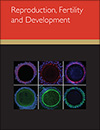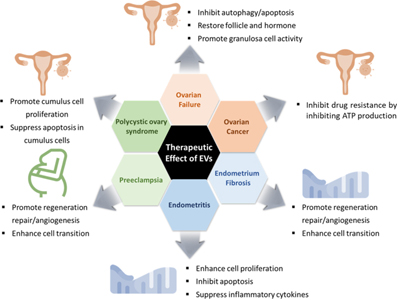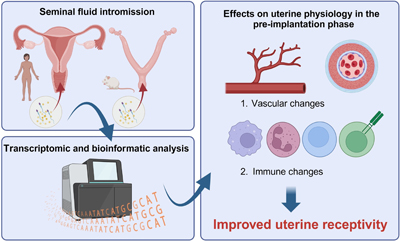Extracellular vesicles (EVs) are tiny but powerful players in the complex process of embryo development, carrying crucial information between cells. This review highlights how these vesicles influence key stages of development, from fertilization to organ formation, and how abnormalities in their function could lead to developmental disorders. Understanding the role of EVs not only deepens our knowledge of early life but also opens new avenues for treating infertility and related conditions. Image by Seok Hee Lee.

Reproduction, Fertility and Development
Volume 37 Number 6 2025
Establishing uterine receptivity to embryo implantation remains a major bottleneck in reproductive success – hence there is a need to better understand the underpinning biological mechanisms. This review summarises and integrates insights gained from gene expression studies that collectively demonstrate seminal fluid drives uterine immune and vascular changes accompanying acquisition of uterine receptivity. Defining the impact of seminal fluid on implantation biology will help us to better understand the determinants of healthy fertility, and develop novel interventions for managing reproduction in humans and animals. Illustration by Hon Y. Chan and Sarah A. Robertson using BioRender.
This article belongs to the collection: Frontiers in Reproduction Science – Rising Stars at the Society for Reproductive Biology 2023.
RD24162 Abstract | RD24162 Full Text | RD24162PDF (482 KB) Open Access Article






